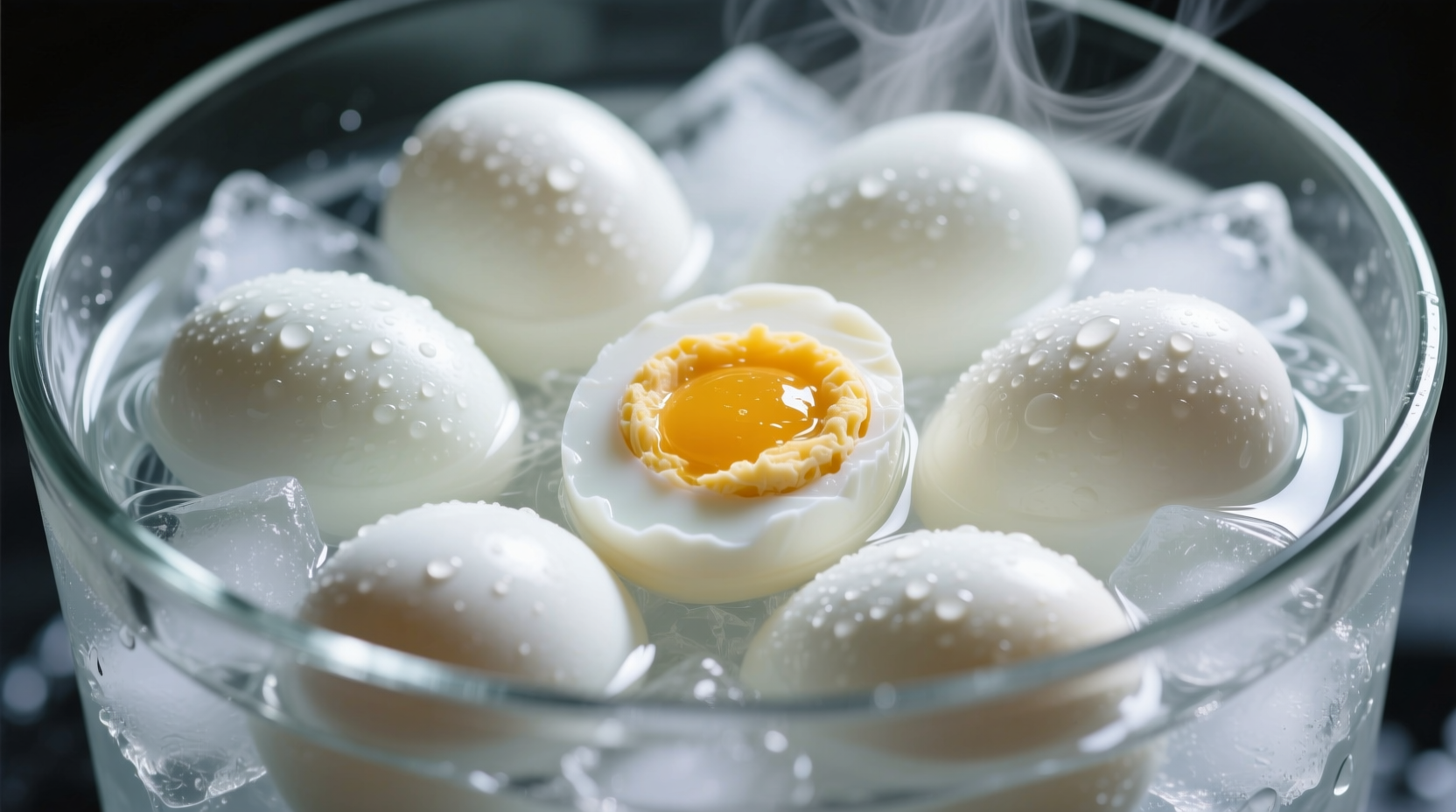Getting hard boiled eggs just right seems simple, but timing variations can make the difference between creamy perfection and disappointing rubbery results. Whether you're meal prepping for the week or making deviled eggs for a gathering, understanding the precise cooking window ensures consistent success every time.
The Science Behind Perfect Hard Boiled Eggs
Egg proteins begin to coagulate at specific temperatures, creating that ideal texture we love. The white sets around 180°F (82°C), while yolks firm up between 158-170°F (70-77°C). Going beyond these temperatures causes overcooking, leading to that unpleasant green sulfur ring around the yolk.
| Egg Size | Recommended Time | Yolk Texture |
|---|---|---|
| Small | 9-10 minutes | Creamy center |
| Medium | 10-11 minutes | Fully set |
| Large | 11-12 minutes | Ideal firmness |
| Extra Large | 12-13 minutes | Firm without dryness |
This cooking time chart, verified by the American Egg Board's culinary research, shows why size matters. Many home cooks use the same timing regardless of egg size, leading to inconsistent results. Large eggs (the most common supermarket size) need that crucial 11-minute window for optimal texture.
Step-by-Step Perfect Hard Boiled Egg Method
Preparation Phase (2 minutes)
Start with room temperature eggs if possible—this reduces cracking. Place eggs in a single layer at the bottom of a saucepan. Cover with cold water by at least 1 inch. Adding a teaspoon of vinegar to the water helps prevent whites from leaking if shells crack.
Cooking Phase (12 minutes total)
Bring water to a rolling boil over medium-high heat (about 8-10 minutes). Once boiling, set your timer for 10-12 minutes depending on your egg size. Crucially, reduce heat to low—maintaining a gentle simmer rather than a vigorous boil prevents eggs from bouncing and cracking.
Cooling Phase (15 minutes)

Immediately transfer eggs to an ice water bath for at least 15 minutes. This rapid cooling stops the cooking process, prevents that green sulfur ring, and makes peeling significantly easier. Don't skip this step—many cooks make the mistake of letting eggs sit in hot water after timing ends.
Altitude Adjustments: When Standard Timing Fails
At higher elevations, water boils at lower temperatures, requiring longer cooking times. This contextual factor explains why many recipes fail for mountain residents:
- Sea level to 3,000 feet: Standard timing applies
- 3,000-6,000 feet: Add 1-2 minutes to cooking time
- 6,000+ feet: Add 3-5 minutes to cooking time
According to USDA Food Safety and Inspection Service guidelines, these adjustments ensure eggs reach safe internal temperatures despite lower boiling points at elevation.
How to Test for Doneness Without Guessing
Don't rely solely on timing—verify with these foolproof methods:
- The spin test: Place egg on flat surface and spin. A fully cooked egg spins smoothly; a raw one wobbles
- Internal temperature: Should register 160°F (71°C) when measured through shell
- Visual check: Crack one egg to verify yolk is fully set but still vibrant yellow
Troubleshooting Common Hard Boiled Egg Problems
Green Ring Around Yolk
This unappetizing discoloration occurs when eggs cook too long or cool too slowly. The iron in the yolk reacts with sulfur in the white. Solution: Strictly follow the 11-minute rule for large eggs and cool immediately in ice water.
Difficult Peeling
Fresh eggs are notoriously hard to peel. For easier peeling, use eggs that are 7-10 days old. The air cell has expanded, creating more separation between membrane and shell. Adding 1/2 teaspoon baking soda to cooking water also raises pH, improving peelability.
Cracked Shells During Cooking
Prevent cracks by starting with room temperature eggs and lowering them gently into water with a spoon. If cracks occur, the vinegar in water helps coagulate escaping whites quickly.
Storage Guidelines for Maximum Freshness
Properly stored hard boiled eggs maintain quality for up to one week. Keep them unpeeled in a covered container in the coldest part of your refrigerator (not the door). Once peeled, store in a bowl of cold water in the fridge, changing the water daily.
Why Timing Matters for Food Safety
Undercooked eggs risk salmonella exposure, while overcooked eggs develop unpleasant textures. The FDA Food Code specifies that eggs must reach 160°F (71°C) to be safe. Our recommended 11-minute timing for large eggs consistently achieves this temperature while preserving optimal texture.
Advanced Timing Techniques for Special Applications
Different culinary applications require precise timing adjustments:
- Deviled eggs: 12 minutes for firm yolks that hold shape
- Egg salad: 11 minutes for creamy texture
- Pickled eggs: 10 minutes to maintain slightly softer texture that absorbs flavors better
Professional chefs at the Culinary Institute of America recommend these specialized timing windows for specific applications, ensuring optimal results for each use case.











 浙公网安备
33010002000092号
浙公网安备
33010002000092号 浙B2-20120091-4
浙B2-20120091-4